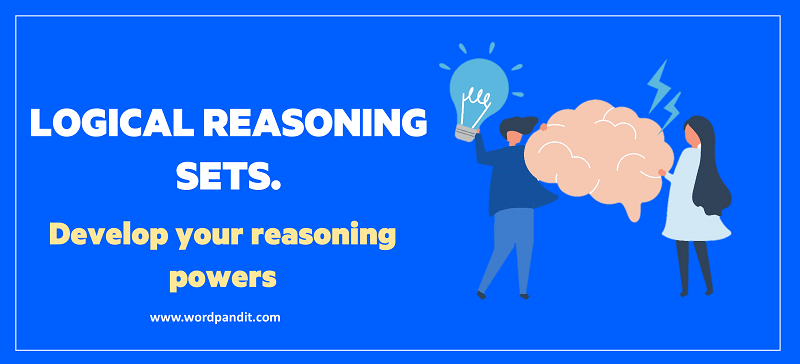Railway group d reasoning questions: Railway group d reasoning questions that you should solve for the Railway exam
Railway group d reasoning questions along with detailed solutions form the most important segment of your preparation. Railway group d reasoning questions will mostly cover the following topics: Analogy, Blood relation, classification, series, non-verbal reasoning, puzzles, coding-decoding, direction and distance, verbal reasoning, alphabet and word test, Venn diagram and missing number. After you are confident with the theory of a topic, try learning your level of understanding by solving a variety of Railway group d reasoning questions. You need to proceed or redo the topic based on your performance and level of confidence after doing as said.
Directions for the question set:
Read the text and the statements carefully and answer the questions.
Four people who are expert in different languages live on the same side of a street in four houses each of different colour. Each person also has a different favourite drink. The following additional information is also known
A. The expert in English lives in the red house.
B. The expert in French drinks green tea.
C. The expert in Hindi lives in the first house on the left.
D. In the second house from the right they drink milk.
E. The Hindi expert lives adjacent to the blue house.
F. The Spanish expert drinks juice.
G. Green tea is drunk in the blue house.
H. The white house is to the right of the red house.
I. Coca-Cola is drunk in the yellow house.
Question 1: Milk is drunk by :
(a) Hindi expert
(b) Englishman
(c) French expert
(d) None of them
Question 2: The Hindi expert drinks :
(a) milk
(b) coco-cola
(c) green tea
(d) fruit juice
Question 3: The color of the Hindi expert’s house is :
(a) yellow
(b) white
(c) blue
(d) red
Question 4: Which of the following is not true ?
(a) Milk is drunk in the red house
(b) French expert lives in the blue house
(c) The Spanish expert lives in a corner house
(d) The French expert lives next to the Spanish expert
Answers and Explanations: Click the down arrow to expand
Answers 1: (b) From the table, it is evident that Milk is drunk by Englishman The correct choice is (b).
Answers 2: (b) Table reveals that Hindi expert drinks coca-cola. The correct choice is (b).
Answers 3: (a) The color of Hindi expert’s house is yellow. The correct choice is (a).
Answers 4: (d) Clearly option (d) gives the wrong information since French expert does not live next to Spanish expert. The correct choice is (d).
Extra tips for Railway group d reasoning questions:
• Build an approach while you take mock exams and solve Railway group d reasoning questions- you can prioritize questions that are of less difficulty level.
• Work on your speed as you are suppose to solve 100 questions in 90 minutes. Try solving the single questions in reasoning in less than 20 seconds.
• While attempting the Railway group d reasoning questions in the exam, target the puzzle sets as, if you are able to crack the set, you can hunt down 3-5 questions in one go.

